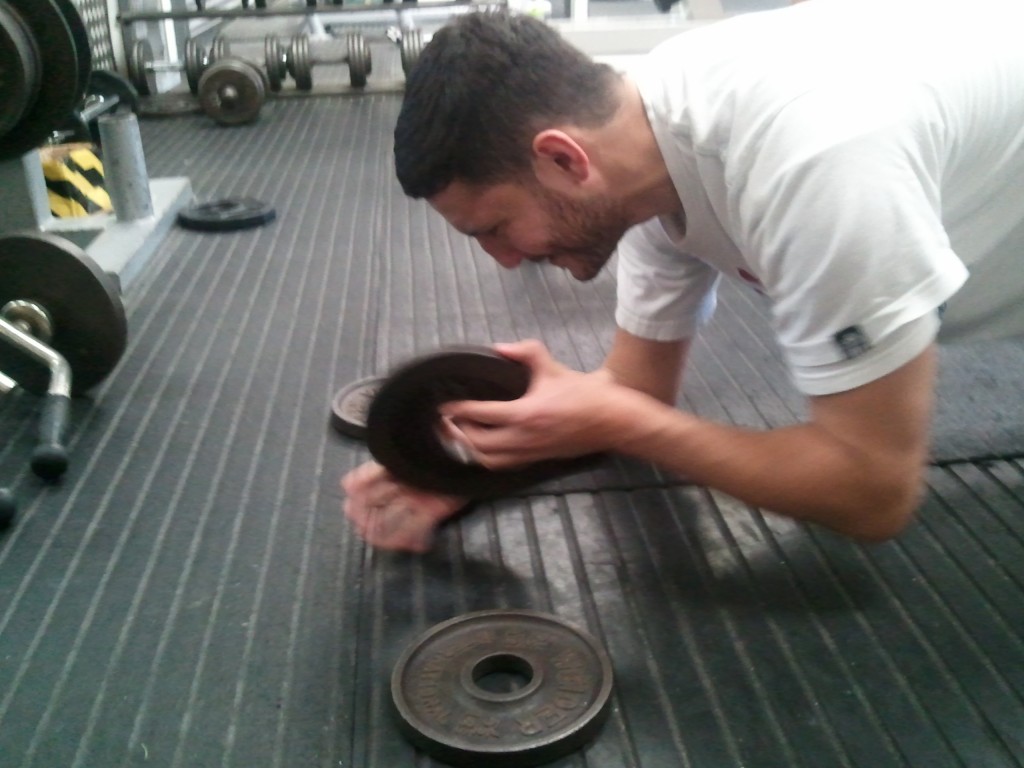Thoughts on Core Training for Grapplers and MMA Fighters
Nothing causes more consternation in strength and conditioning than core training, MMA and Grappling athletes are obsessed with core strength lets face it. Trainers tout the term like it means something. Core training is effectively your ability to maintain posture and center of gravity, it does’nt strictly mean abdominal muscles, but the hip and trunk too. Right now in fitness we are going through a static core training trend, you’ll see many a trainer give out plank variations by the fist full, I don’t think I have seen an exercise administered so many different ways before. And boy are they boring and not to mention easily mastered by anyone with any sort of athleticism.
Pro Sean Carter working on plate passes, an effective way to make planks more challenging
The rise of the static core exercise means spinal flexion has been left out. It was Dr Stuart McGill’s research that caused this shift in core training, showing use that spinal flexion can be rough on lower backs. Problem is MMA fighters and grappler actively spends a lot of time in spinal flexion especially when going for submissions. Should we train this movement in addition to static and anti rotation work too? It depends on the athlete and their lower back health, if they are already performing spinal flexion as part of their sport then do we need to do more to further lock in tightness of the lower lumbar and hip?
Due to repeated sitting we do in the sport plus the plenty of sitting in our daily lives our hips muscle short and tight our glutes weak, hamstrings short. We need to think about doing more to open the athlete up rather than turn them into a human clam. I have mentioned in the past how a lot of grapplers and fighters suffer from upper crossed syndrome due to functional shortening adaptations in the sport. That is not to say I’m throwing crunch like movements on trash heap just take more thought when dishing them out. Just consider the risk reward value and the state you or the athlete are in.
We can look at training the core with full body movements in addition to our stricter holds, flexion and anti-rotation work. Also if your core is pathetically weak, its an idea to train it FIRST, sure you will be able to lift as much in successive exercises but if it is worth doing then it is worth doing at the start not as an afterthought.
So What core exercises do I like? Well these are a few I keep coming back too. No Swiss balls needed.
Anything Over Head
Overhead movements require the body the function as a single coordinated unit, because the weight is held over and away from the center of gravity this causes terrific instability which can only be cancel out by bracing the core and staying tight.
Wide stance anti rotation chop
Terrific exercise I nabbed off Eric Cressey this allows us to get out of saggital plane of movement (forwards and backwards) and “work on rotary stability and getting some hip mobility at the same time.” I usually pair this with another exercise.
Ring Roll outs
A core exercise from your head to your toes! Provided you do not butcher the technique and allow the lower back to sag during the movement or the shoulder to hyper extend too much. For those you starting out you can look to begin on the knees.
Obviously this is by no means an exhaustive list of “core” exercises. The key thing with these is they are loadable or represent part of a progression of difficulty, these two keys are important when trying to improve strength, think about that while you do your next set of 200 crunches or flutter kicks.
This is an ongoing series of articles from guest blogger and Strength & Conditioning coach William Wayland of Powering Through.
